If your idea is to take a trip to beautiful Sardinia on four or two wheels, it is good to know what stops you should not miss on an itinerary in the North of the island. In most cases, your tour will be starting in Olbia, which is why we will start our journey on the road from this coastal city in the northeast.
Remember that these places, in addition to their architectural and landscape beauty, are the scene of fascinating folkloric events that express their true soul. Well, let's not waste any time, get on board your four wheels or motorbike and we will take you on an exciting North Sardinia road trip by car and bike that will simply make you fall in love!

North Sardinia road trip by car and bike: what awaits you
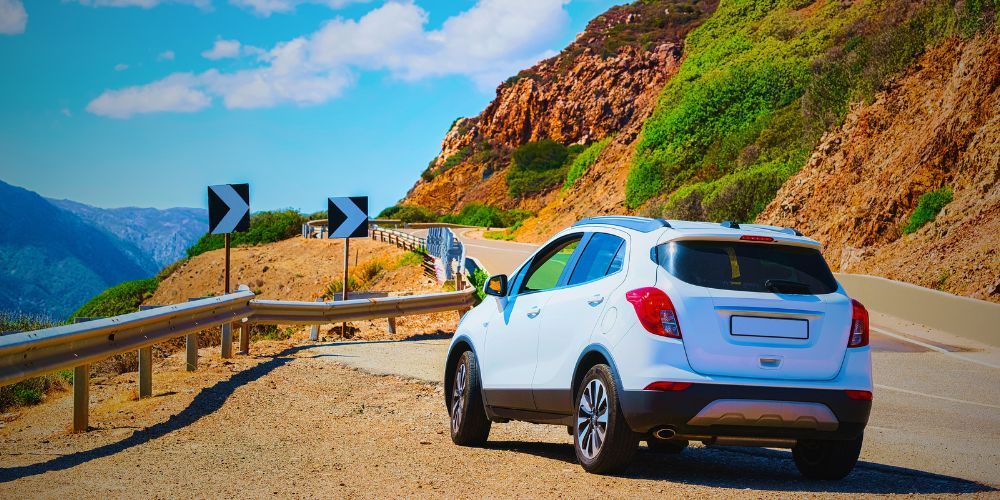
Thanks to its winding roads through an ever-changing landscape, Sardinia knows how to make the journey, from one stop to the next, an extraordinary experience. This island is a true dream for two-wheelers, but it's a land equally beautiful for those who prefer the comfort of four wheels.
Our on the road tour will focus on North Sardinia, the most magical territory in the island. We will take you on a discovery of cities, famous tourist centres, breathtaking landscapes, almost wild little islands, the bright colours of the vegetation and rocks, and ancient manors stretching out over the sea. And then, again, of beaches bathed by crystal-clear water offering a thousand shades of blue and villages nestled between the countryside and the mountains holding architectural treasures.
If you love the adventure of on the road trips, a tour in North Sardinia by car and bike is an experience to do at least once in a lifetime. Or better: once won't be enough, because you'll be longing to return and see these beautiful places again!
10. North Sardinia road trip by car and bike: the tour starts in Olbia
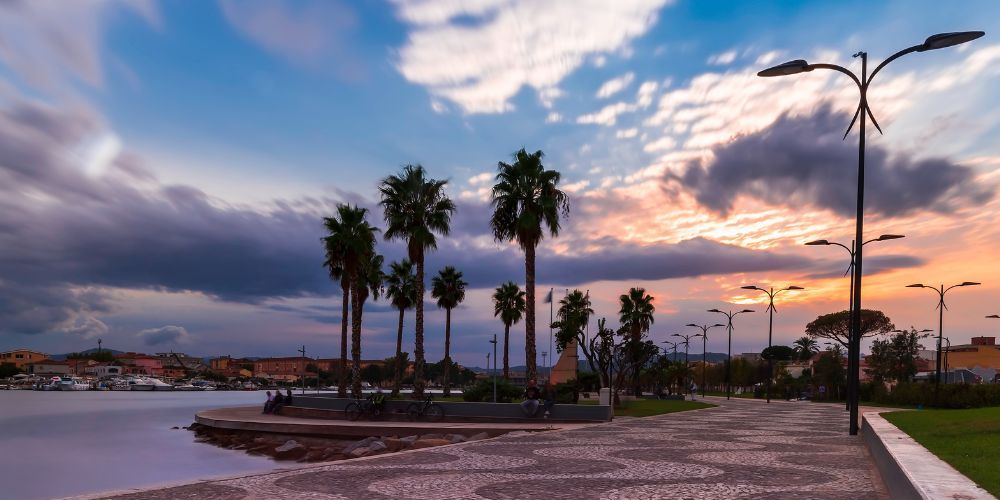
In addition to the characteristic Sardinian landscape, Olbia is famous because it is a city full of history. The Archaeological Museum exhibits artefacts found in excavations, including a treasure of nearly 900 gold coins; the Punic-Roman necropolis includes 450 tombs and is located at the foot of the altar of the suggestive medieval basilica of San Simplicio. In this ancient city, the first evidence of human date back to 4000 BC due to dolmens and menhirs.
Many Nuragic settlements in the territory, about fifty, date back to the Bronze Age, including the Giants' tomb of Su Mont'e s'Abe, the nuraghe Riu Mulinu, the village of Belveghile and the sacred well of Sa Testa. The city of Olbia then became the main centre in Sardinia of the Roman Empire of which traces of great value remain.
The happy city, as Olbia is affectionately called, is also the annual headquarter for the event Benvenuto Vermentino and Premio Nazionale Eno-Literario Vermentino, two events of great cultural, social and economic importance where the world of wine-making and publishing cross paths celebrating the excellence of wine Vermentino DOCG.
9. Costa Smeralda e Porto Cervo
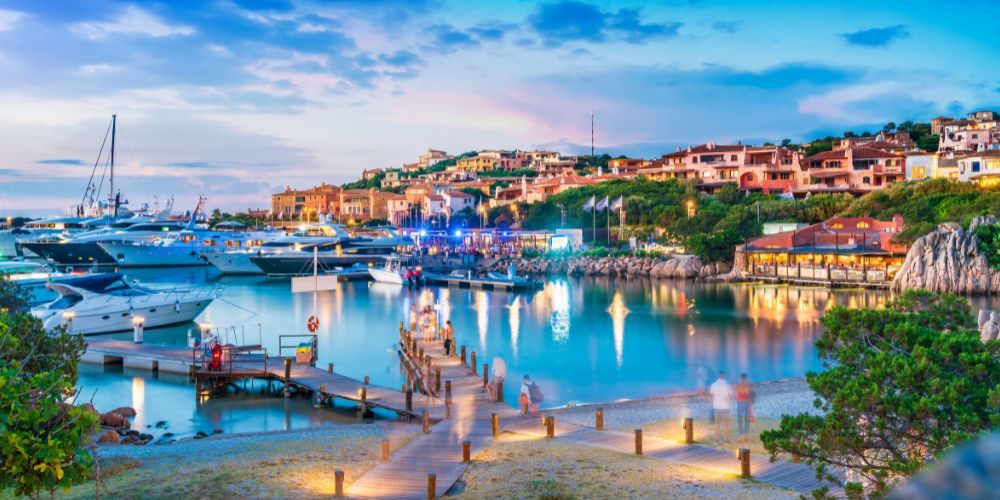
And here we come to the most exclusive stage of our tour in North Sardinia by car and motorbike. In addition to these historical gems, it must be said that Olbia is the city that gives access to the Costa Smeralda, known worldwide for its wonderful seascapes and exciting nightlife.
You will find white sand and shades of blue and green in a crystal-clear sea in the many renowned coves of Porto Cervo. Among these, the Grande and Piccolo Pevero, the Romazzino, the Principe beach, cala di Volpe and the islands of Soffi and of the Camere and the islet of Mortorio stand out for their beauty and fame. Capital of high society in summer, Porto Cervo is famous for its clubs and events in which many young people, as well as many VIPs, participate.
The centre is built on a raised floor concerning the port so that from Piazzetta delle Chiacchiere to Sottopiazza you can witness a maze of narrow alleys, windows and balconies in the style of Costa Smeralda. The splendid villas climb up to the surrounding hills, immersed in the Mediterranean scrub.
8. Palau
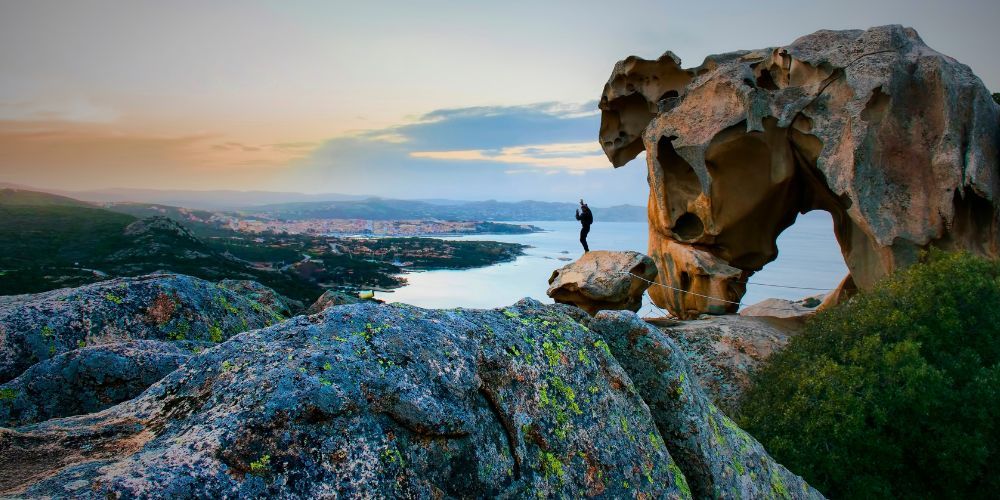
Continuing along the coast to the north, you will find the town of Palau. It's a village full of lights and events - like the unmissable show of Festival Isole che Parlano - set in a characteristic cove. The main festival is in honour of Santa Maria Delle Grazie at the beginning of September. Also not to be missed is the Carnival: a reason to make Palau your destination even in winter.
Near the town, a natural sculpture appears on a promontory: the Bear Rock, of which the geographer Ptolemy already attested its presence in the second century AD. The landscape of Capo d’Orso is interesting thanks to tombs and remains from the Neolithic age. Other sites to visit are the Luchìa nuraghe and the tombs of Giants of Li Mizzani and Sajacciu, near the church of San Giorgio.
The marine nature is no less beautiful: the Sciumara beach and the suggestive coast of Porto Faro are famous, an exclusive place characterized by luxurious villas among olive trees, myrtle and lavender reserved for Porto Rafael.
7. La Maddalena island
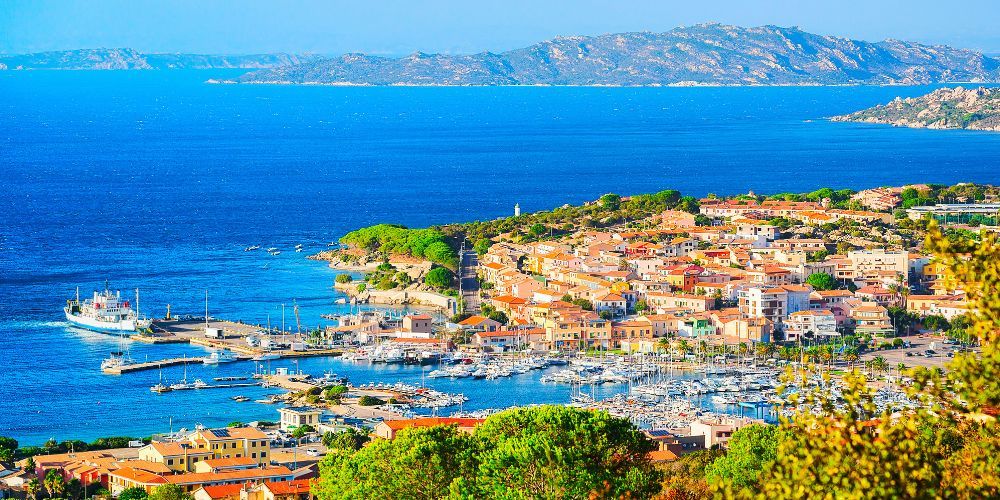
In front of Palau and only 20 minutes away by ferry you can admire the fascinating La Maddalena island, full of alleys and buildings of the eighteenth century. In the small port of Cala Gavetta stands the effigy of Giuseppe Garibaldi, who lived the last 26 years in Caprera. This small island is joined to La Maddalena by the Passo Della Moneta and is famous for the Garibaldi museum compendium.
A few kilometres from the centre is the fjord of Cala Francese with paths that lead to the discovery of peaceful coves and dream beaches. Other wonders not to be missed are the Eagle's Nest and Punta Regge while to the north there are the coves made of white dunes: unmissable Bassa Trinità, Cala Lunga and Monti d'Arena.
6. Santa Teresa di Gallura
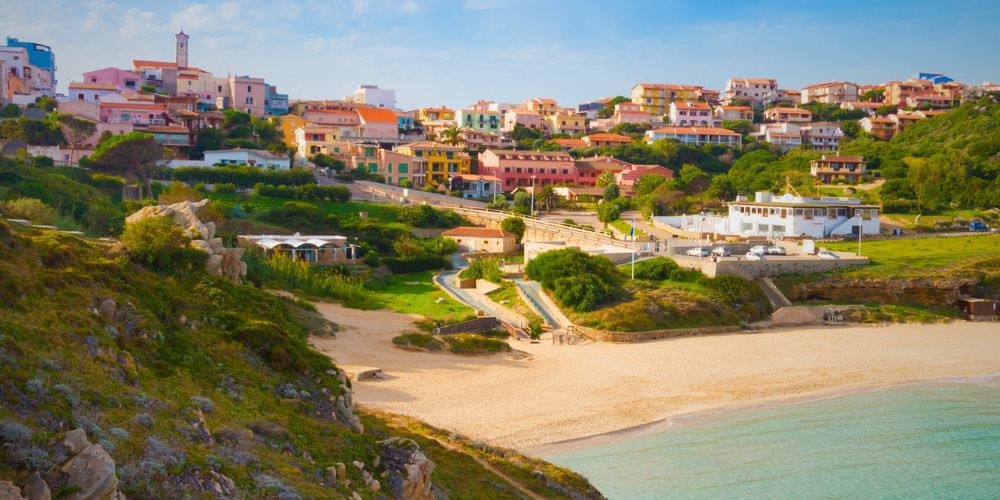
Then returning to Palau and continuing along the coast to the North, venturing into the beautiful region of Gallura, we get to Santa Teresa di Gallura. Vittorio Emanuele I of Savoy founded it in 1808, renaming a place called Longosardo with the name of his wife Maria Teresa.
The town is characterized by two inlets: to the east Porto Longone, where the tourist port is located, to the west the bay of Rena Bianca. From above stands the suggestive Tower of Longosardo, built at the behest of Philip II of Spain. Around the village, we can admire other fascinating beaches: wide and equipped is La Marmorata, more suggestive instead Cala Sambuco, Cala Balcaccia and Santa Reparata.
5. Isola Rossa
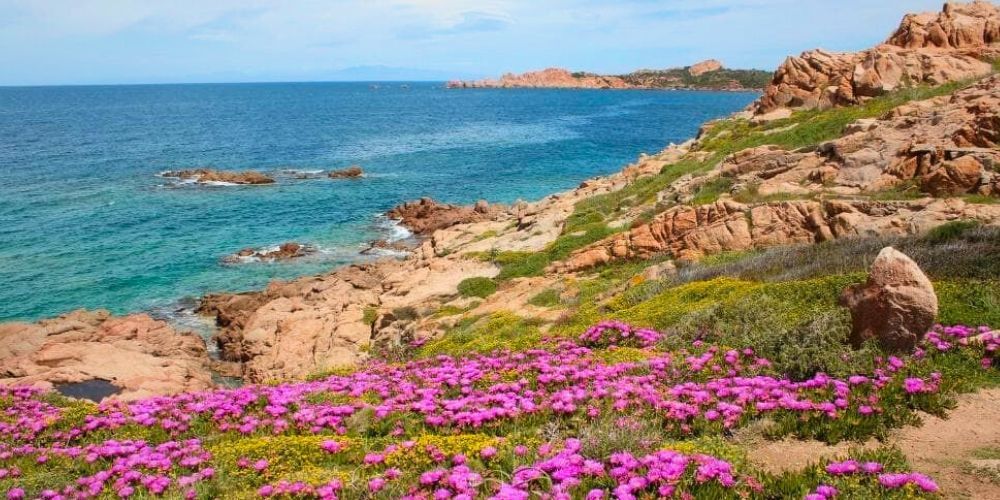
After touching the island's northern end with Santa Teresa di Gallura, our journey proceeds eastwards following the coast. Whether you chose a car or motorbike for this beautiful tour of North Sardinia, the roads here offer breathtaking views and colours.
Travelling along the coastline, you will see Isola Rossa (namely red island). This small fishing village stands on a small promontory with a small red islet in front of it, giving it its name. The undisputed protagonist is a high sixteenth-century tower, a legacy of the ancient Spanish dominion.
Inside the town there are the Longa beach of Funtana Eccia and the small harbor. Rossa island is also surrounded by an enchanting cliff with natural coves and paths among the Mediterranean nature.
4. Castelsardo
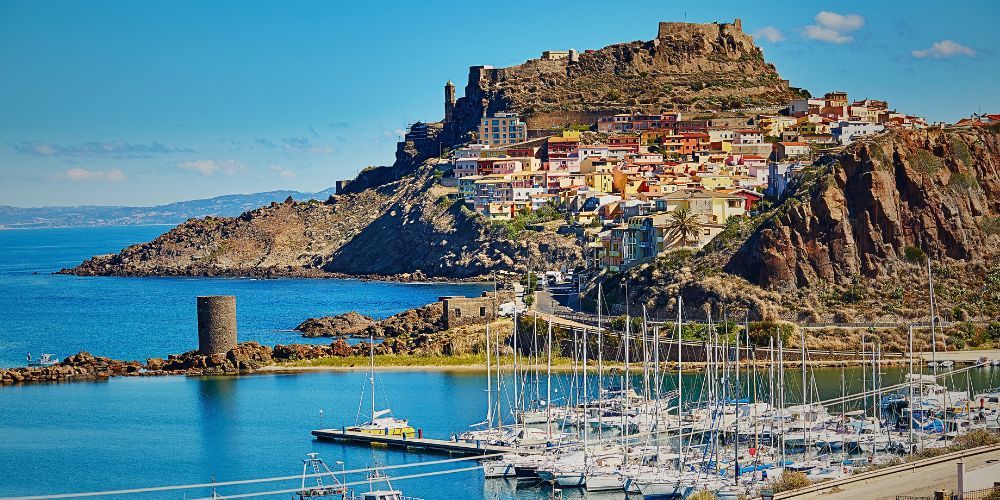
Moving westwards, not to be missed is Castelsardo, an enchanting medieval village on a promontory that overlooks the centre of the Asinara Gulf.
Its naturalistic beauties, splendid inlets, the typical products, the craftsmanship, the traditions and the characteristic port make it one of the most evocative tourist resorts in Sardinia. The origins of the village are ancient: Castelsardo was built around the Doria Castle, dating back to 1102, now home to the Museum of Mediterranean Weaving, one of the most visited in Sardinia.
At the beginning of the 16th century, it was renamed Castillo Aragonés and became a bishopric until the construction of the cathedral of Sant'Antonio Abate (1586), splendid for its bell tower overlooking the sea.
Today Castelsardo is considered one of the most evocative villages to visit not only on the island, but all over Italy: a special place full of charm and keeper of some of the most authentic local traditions, a beauty to be discovered especially through many cultural events and festivals that animate this gem of the Mediterranean, like the iconic and prestigious Festival Musica sulle Bocche.
3. Stintino

Continuing our journey along the Sardinian coast, in the extreme north-west point, the town of Stintino shines with its light, located on one of the most beautiful coasts of the whole island. The sea of Stintino is one of the most crystalline in the whole Mediterranean and its beaches are very white. The turquoise colour of the water will be one of the most unforgettable memories you will take with you after a North Sardinia road tout by car and bike.
Famous are the La Pelosa and La Pelosetta beaches, closed by a characteristic Aragonese tower dating back to 1578. You cannot miss the natural oasis of Stintino characterized by two ponds full of peculiar flora and fauna. From the glimpses placed at a height of two hundred meters, you can then enjoy the unique panorama that also embraces the Piana island and the national park of Asinara, uncontaminated and wild. Stintino is the closest embarkation point to visit.
If you are passionate about sailing, the Municipality of Stintino has been hosting a famous regatta since 1983. The country is the "capital" and icon of wooden gozzo boats with Latin sail.
2. Alghero
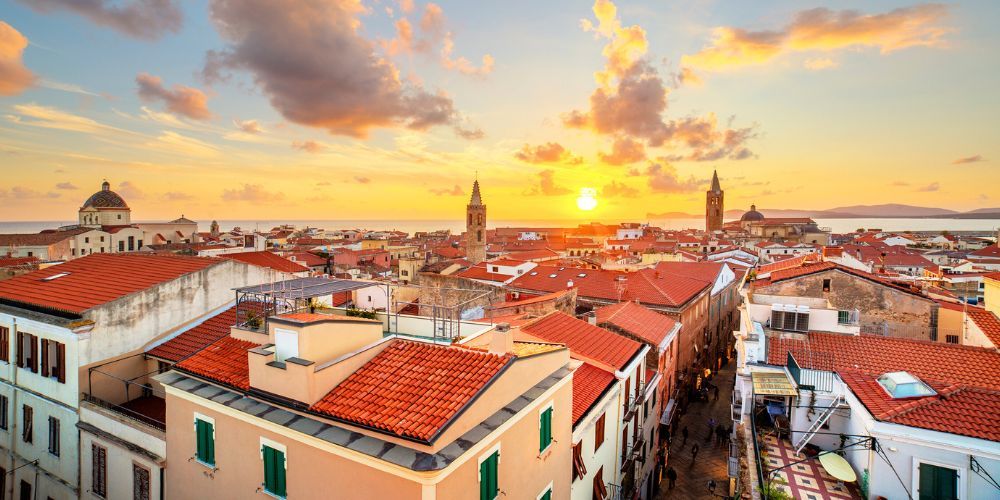
The last place of our tour remains Alghero, another town in the northwest surrounded by ancient walls and famous for its characteristic historic centre where exciting walks can take place along the bastions of the port and among the red roofs that almost touch the sky.
Its coastline is about 90 kilometres long and is called Riviera del Corallo: here lives the largest colony of coral of the finest quality. The best-known beach is Le Bombarde, a destination for surfing enthusiasts.
Just a kilometre away, there is the Lazzaretto, an arc of pale fine sand. Also famous is the Mugoni beach with golden sand that plunges into an ever calm sea. Already in 1986 the town became famous thanks to Giuni Russo's song entitled Alghero, still listened today at the piano bars among other timeless Italian songs.
And speaking of music, in this beautiful seaside town don't miss the appointments with the funky concerts of JazzAlguer, the show mixing jazz and arts to relax here in North Sardinia after a fantastic road tour by car and motorbike.
1. North Sardinia road trip by car and bike: the most authentic inland villages
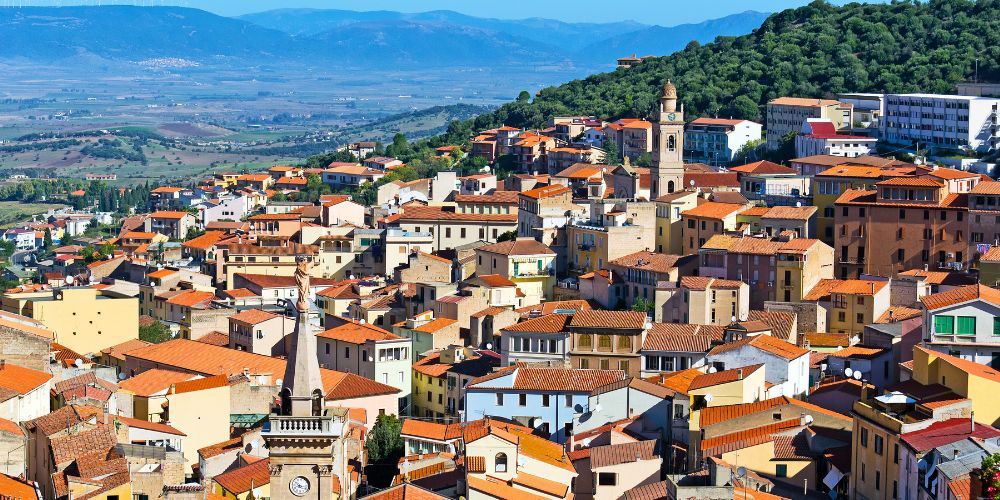
So, our North Sardinia road tour by car and bike ends here, but if you're looking for more fantastic stops on your journey then we recommend you to visit the most authentic villages of Sardinia, places where tradition and folklore are still firmly rooted.
True explorers will find the true soul of the region: unspoilt nature and a lot of history. These places preserve unique and precious customs and traditions, which the world vitally needs to know and savour. Are you wondering which sardinian villages visit? Let's try to give you an idea...
Ozieri (in picture): an ancient village in the historical region of Logudoro, where you can admire beauties such as Basilica of Sant'Antioco di Bisarcio, the Roman bridge Pont'ezzu, the caves of San Michele and the Grixoni fountain;
Bulzi: is a small village in the historical region of Anglona, but where people speak Logudorese (traditional Sardinian language);
Osilo: a medieval village and the second-highest municipality in the province of Sassari;
Trinità d'Agultu e Vignola: here travellers will find a splendid coastline with soft white beaches and a beautiful hinterland that includes the Zincu Tenti forest flora and fauna reserve;
Aglientu: in the historical sub-region of Gallura, it rises a few kilometres from the sea, in a predominantly granite territory;
Nulvi: an ancient mountain centre in Anglona, with an agro-pastoral tradition, that preserves around 80 nuraghi;
Martis: a small village in the centre of Anglona, characterised by a territory rich in relief;
Tegu: a small village with an agricultural vocation and less than 600 inhabitants, famous for its beautiful Church of Nostra Signora;
Laerru: 30 km from Castelsardo, famous for its briar pipes and surrounded by beautiful landscapes;
Chiaramonti: a small village at the foot of a castle, famous for its craft tradition;
Tempio Pausania: in the heart of Gallura, it is famous for its Carnival and owes its name to the 'granite temple' surrounded by water and greenery.
The towns and cities of Sardinia reveal their most authentic soul in folkloristic events and popular festivals, moments of charm perfect for an unforgettable trip. The most beautiful events in North Sardinia are part of Salude & Trigu, a project developed by the Chamber of Commerce of Sassari to enhance this extraordinary territory, rich in millenary traditions, flavours, music, a unique way of honoring this land and its history and celebrating a beauty that never ceases to thrill.
About the author
Written on 22/08/2024


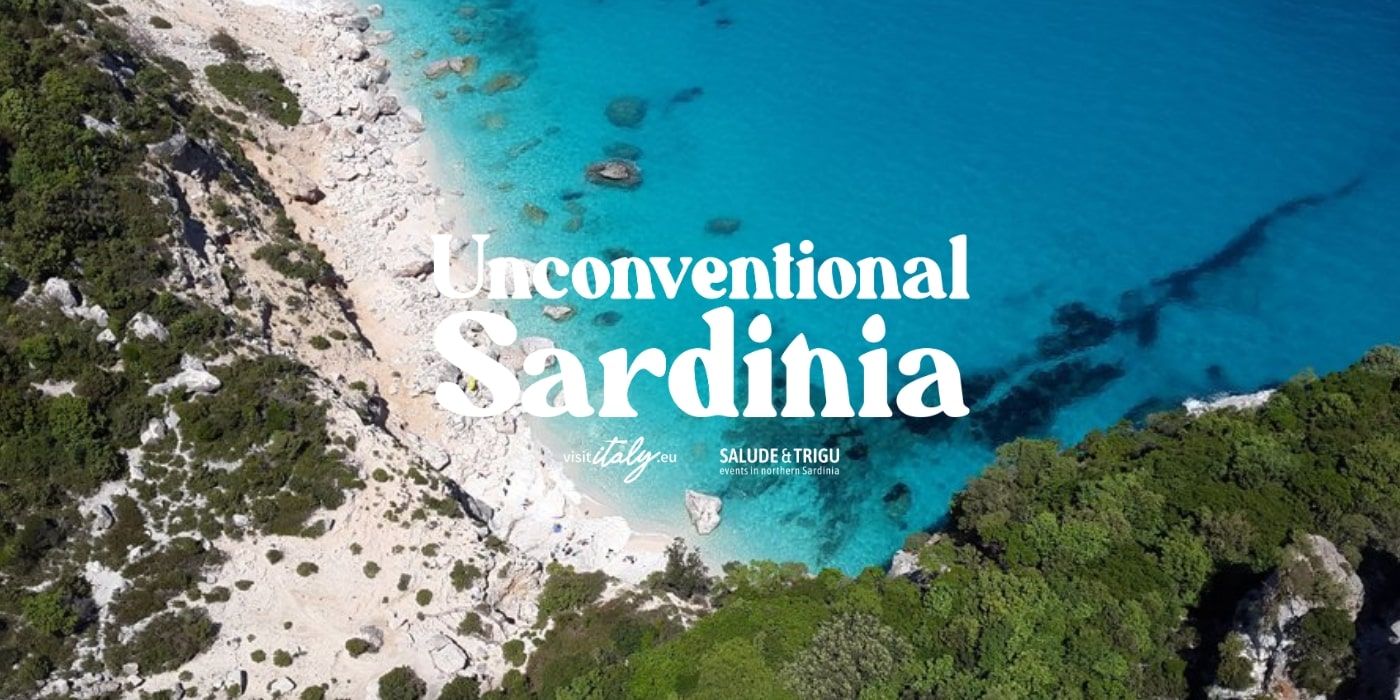
Mario Galterisi
Would you like to explore the beauty of North Sardinia by car and bike? Find out the complete road trip in 10 unmissable stops on four and two wheels!